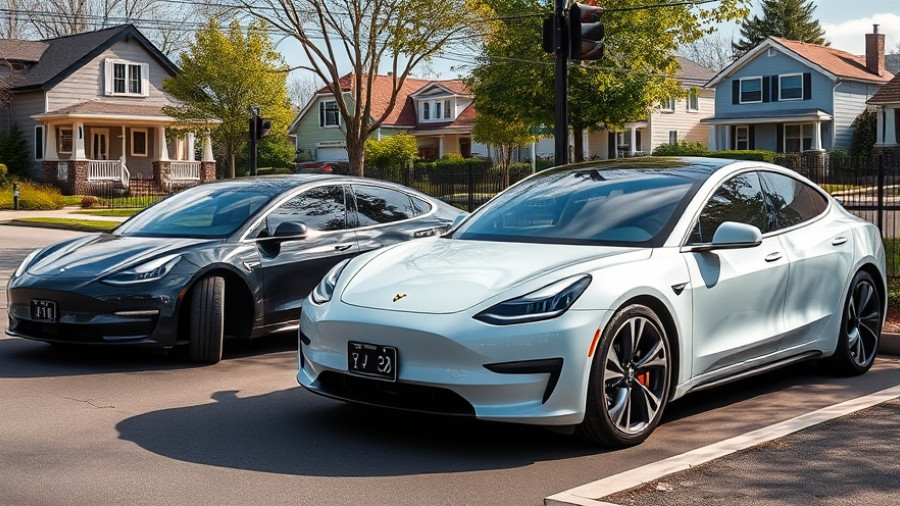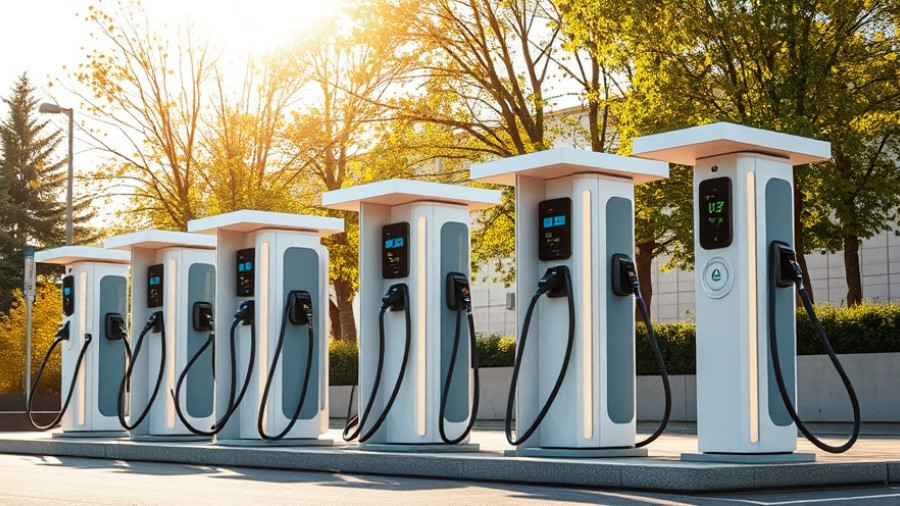
Understanding the Current Surge in Electric Vehicle Demand
The electric vehicle (EV) market in the U.S. is experiencing unprecedented growth, with over 1.5 million EVs sold in 2024 alone. This trend is not just a passing phase; it’s a significant movement towards sustainability as consumers increasingly choose electric over traditional combustion engines. The total value of the EV charging market is projected to skyrocket to $122.49 billion by 2030 from about $32 billion in 2024. Factors fueling this expansion include technological advancements, robust corporate sustainability goals, and heightened consumer expectations around green energy solutions.
Market Trends and Investment Opportunities
As new EV models become more accessible owing to decreased battery costs and improved technology, the need for charging stations is surging. Not just for consumers, this trend opens massive opportunities for businesses, particularly in sectors like retail and hospitality, where offering charging stations could attract environmentally conscious customers. Businesses can benefit by redefining their service offerings and establishing a strong presence in the booming EV charging market.
Leveraging Strategies for Maximum Impact
To fully capitalize on this momentous trend, businesses can deploy strategic options such as white-label charging solutions. This approach allows businesses to brand their own charging stations while leveraging existing technology and infrastructure, thus accelerating the rollout process.
Another strategic consideration is optimizing charging station locations. Sites near malls, restaurants, and office buildings can position businesses to attract EV drivers looking for charging solutions while they shop or dine. This integration not only enhances customer experience but can also generate additional revenue streams through charging fees.
The Role of Government Policies and Incentives
Government incentives play a crucial role in facilitating the transition to electric mobility. In the U.S., federal programs are introducing substantial funding to build a robust EV infrastructure. The National Electric Vehicle Infrastructure (NEVI) Formula Program allocates billions to develop an interconnected EV charging ecosystem. Compliance with evolving regulations also offers investors a safety net, helping to reduce initial capital requirements and stabilize operational costs.
Future Trends and Technological Innovations
Looking beyond current growth projections, technological innovations promise to reshape the EV charging landscape. Ultra-fast charging technologies are emerging, which can significantly reduce charging times, enhancing consumer convenience and encouraging the adoption of EVs on a larger scale. Combined with developments in Vehicle-to-Grid (V2G) technology, where vehicles can supply power back to the grid, future EV charging stations may become vital components of local energy systems.
Conclusion: A Call to Action for Investors and Businesses
As the EV market continues to grow, so too does the potential for investment in EV charging infrastructure. Whether for a business looking to offer charging as a perk to customers or for investors aiming to capitalize on this burgeoning sector, now is the time to act. By investing in EV charging stations, businesses position themselves not just for financial return but as champions of sustainable energy practices.
 Add Row
Add Row  Add
Add 



Write A Comment